What do Plants Need to Survive
- February 12, 2024
- 0 comment
Discover the essentials for plant survival: sunlight, water, nutrients, air, and suitable temperature. Thrive in gardening with these key insights. Plants, like all living organisms, have basic requirements to sustain life and thrive. Understanding these essentials not only enhances our gardening skills but also deepens our connection with the natural world.
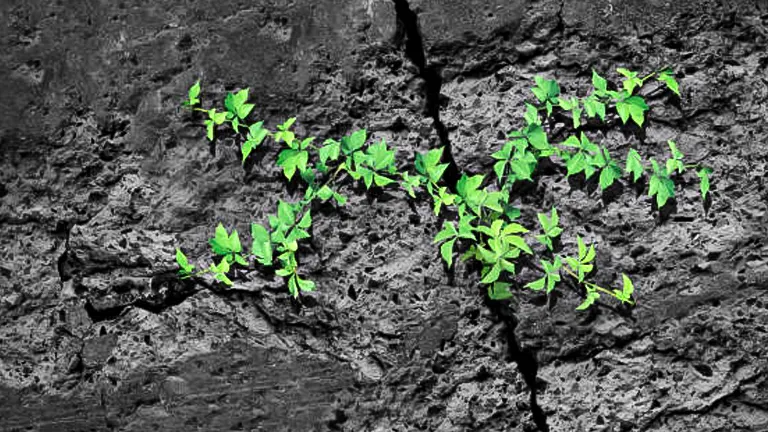
In this brief overview, we delve into the vital elements that plants need to survive, ranging from the energy of the sun to the nutrients within the soil. Join us as we explore how to nurture your green companions effectively.
List of What do Plants Need to Survive
The Essentials of Plant Survival
The Essentials of Plant Survival
Plants are the backbone of all life on Earth, providing oxygen, food, and habitats for countless species, including humans. Understanding what plants need to survive is not just a matter of curiosity but a necessity for maintaining the health of our planet and ensuring the success of our gardening and farming endeavors. This article delves into the fundamental requirements of plants, offering insights for anyone looking to nurture their greenery.
Light: The Beacon of Life

The journey of plant survival begins with light, a critical energy source that fuels the process of photosynthesis. Photosynthesis allows plants to convert light energy into chemical energy, producing the sugars they need for growth and oxygen as a byproduct. Without adequate light, plants cannot photosynthesize efficiently, leading to weakened growth, pale leaves, and, ultimately, the inability to survive.
Natural vs. Artificial Light
While sunlight is the most natural form of light for plants, not all greenery can thrive in direct sun. Some require filtered or partial light, avoiding the harsh rays of midday. For indoor plants, artificial lighting can substitute natural light, with LED or fluorescent lights offering the spectrum needed for photosynthesis. Understanding the specific light requirements of your plants is key to ensuring their health and vigor.
Light Requirements and Effects on Plant Growth
| Light Type | Wavelength Range (nm) | Photosynthetic Photon Flux Density (PPFD) for Optimal Growth (µmol/m²/s) | Specific Effects on Plant Physiology |
|---|---|---|---|
| Blue Light | 400 – 500 | 100 – 250 | Crucial for stomatal opening, which affects water regulation and CO2 uptake. Promotes vegetative growth by influencing cell elongation and leaf development. |
| Red Light | 600 – 700 | 150 – 300 | Enhances flowering and fruiting by influencing the phytochrome system, which is involved in the regulation of germination, flowering, and other developmental processes. |
| Green Light | 500 – 600 | 50 – 100 | Improves penetration through thicker foliage, aiding in the photosynthesis of lower leaves. Contrary to popular belief, green light does contribute to photosynthesis, especially in deeper leaf layers. |
| UV Light | 280 – 400 | Not recommended for direct exposure | Can damage plant DNA and cellular structures but in controlled amounts may enhance defense mechanisms against pests and diseases. Also, it can increase the production of compounds beneficial for human health when plants are consumed. |
| Far-Red Light | 700 – 800 | 10 – 50 (Supplementary) | Affects shade avoidance responses, stem elongation, and leaf expansion. It also plays a crucial role in the timing of flowering, working in tandem with red light to regulate the phytochrome system. |
| Full Spectrum LED | 380 – 800 | 200 – 400 (Varies by plant) | Mimics sunlight, providing a balanced spectrum for all stages of plant growth, from seed germination to flowering and fruiting. Offers the flexibility to adjust intensities and spectral compositions for specific plant needs. |
Scientific studies have quantified the optimal light intensities for various plants, demonstrating that light intensity (measured in micromoles per square meter per second, µmol/m²/s) directly influences photosynthetic rates. For instance, lettuce shows optimal growth at light intensities around 200 µmol/m²/s, while tomatoes may require up to 400 µmol/m²/s for maximum yield.
Furthermore, the duration of light exposure, or photoperiod, plays a crucial role in plant development. Short-day plants require less than 12 hours of light to flower, whereas long-day plants thrive on more than 14 hours. Day-neutral plants, however, flower regardless of the photoperiod, focusing more on maturity or age.
Understanding the specific light requirements of plants, including the spectrum, intensity, and duration, is essential for optimizing growth conditions, whether in natural or artificial environments. Tailoring light conditions to match plant needs can significantly enhance health, vigor, and productivity, offering a tangible way to connect with and support the natural world.
Ensuring Adequate Light
Providing the right amount of light involves observing your plant’s response to its positioning and making adjustments as needed. Signs of too much light include scorched leaves, while insufficient light may cause leggy growth as the plant stretches towards the light source. Regularly rotating your plants can ensure an even distribution of light, promoting balanced growth.
Water: The Essence of Life

Water is as vital to plants as it is to humans, playing a central role in photosynthesis and nutrient transport. It dissolves nutrients in the soil, allowing them to be absorbed through the roots and transported to various parts of the plant. Additionally, water is crucial for maintaining the plant’s structure, aiding in photosynthesis, and regulating temperature through transpiration.
Watering Techniques
The key to proper watering is understanding the unique needs of your plant, as both overwatering and underwatering can lead to health issues. Overwatering can suffocate plant roots and lead to root rot, a fatal condition. Underwatering, on the other hand, can cause plants to dry out, leading to wilted leaves and stunted growth. The best practice is to water deeply but infrequently, allowing the soil to dry out slightly between waterings. Here are some tips and guides for effective watering techniques that can help ensure your plants thrive by receiving the right amount of water they need:
Check the Soil Before Watering
- Tip: Insert your finger into the soil up to the second knuckle. If the soil feels dry, it’s time to water. For potted plants, lift the pot; if it feels light, it likely needs water.
- Water Deeply But Infrequently
- Guide: Deep watering encourages deeper root growth, leading to stronger, more drought-resistant plants. Allow the top inch of soil to dry out between waterings to prevent overwatering.
Best Time to Water
- Tip: Water early in the morning or late in the afternoon to reduce water evaporation. Morning is preferable as it helps prevent fungal diseases by allowing the foliage to dry out during the day.
Use the Right Irrigation Method
- Drip Irrigation: Efficient for watering the roots directly and conserving water.
- Soaker Hoses: Good for garden beds, ensuring even moisture delivery.
- Watering Cans: Ideal for potted plants or small garden areas where you need to control the water flow.
Mulching
- Tip: Apply a 2-3 inch layer of organic mulch around your plants to help retain soil moisture, regulate soil temperature, and reduce weed competition.
Adjust Watering to Plant Needs
- Guide: Different plants have varying water requirements. Research your plants’ needs, considering their growth stage, the season, and the local climate.
Monitor Weather and Adjust
- Tip: Reduce watering in rainy periods and increase during hot, dry spells. Consider installing a rain gauge to track natural rainfall and adjust your watering accordingly.
Avoid Watering Foliage
- Guide: Direct water at the soil level rather than over the leaves to minimize the risk of fungal diseases. Use a watering can with a long spout or a hose with a wand attachment for precise watering.
Collect Rainwater
- Tip: Use rain barrels to collect rainwater. It’s not only eco-friendly but also beneficial for plants due to its lack of chlorine and other chemicals found in tap water.
Soil Quality: The Foundation of Growth
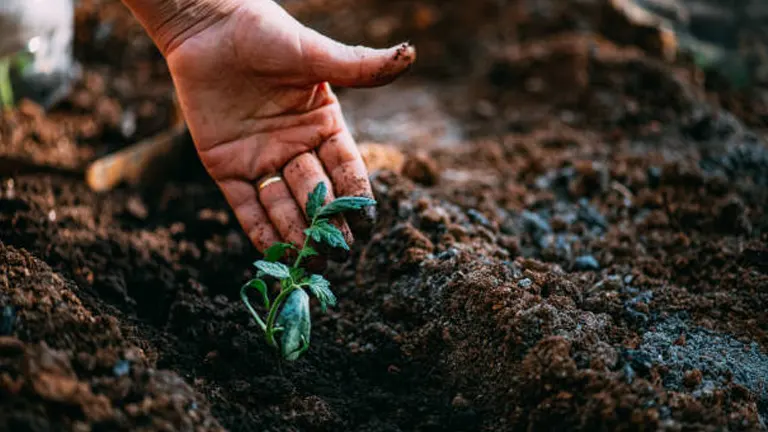
Soil isn’t just dirt; it’s a living, breathing foundation that nourishes and supports plant life. Soil quality directly impacts plant health by influencing root growth, water drainage, and nutrient availability. Different plants thrive in different soil types, from sandy and well-draining to clay-rich soils that retain moisture.
Understanding Soil Types
The key to optimizing plant health is understanding and adjusting the soil type to match plant needs. Sandy soils, while promoting good drainage, may require frequent watering and fertilization. Clay soils, conversely, hold moisture and nutrients well but may need amendments to improve drainage and prevent root rot.
Enhancing Soil Quality
Improving soil quality involves incorporating organic matter such as compost, which enriches the soil with nutrients and improves its structure. Regularly testing soil pH and adjusting it with lime (to raise pH) or sulfur (to lower pH) ensures the soil environment is ideal for your plant’s nutrient uptake.
Air and Atmosphere
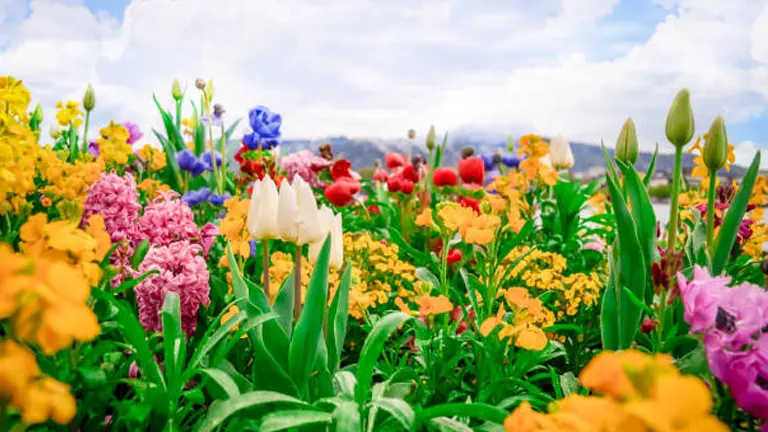
Air quality and circulation play crucial roles in plant health, particularly through the availability of carbon dioxide (CO2) for photosynthesis. Plants absorb CO2 from the air and convert it into oxygen and glucose, a process vital for their growth and the environment.
CO2 Concentration and Plant Growth
Carbon dioxide is a key ingredient in photosynthesis. Ambient CO2 levels in the atmosphere average about 400 parts per million (ppm), but plants can benefit from elevated CO2 levels, up to a point. Enhanced CO2 concentrations can significantly increase photosynthesis rates, leading to faster growth and higher yields, a principle utilized in commercial greenhouse operations.
CO2 Concentration Effects on Plant Growth
| CO2 Concentration (ppm) | Effect on Photosynthesis Rate | Plant Growth Impact |
|---|---|---|
| 150 – 200 | Significantly Reduced | Stunted Growth |
| 400 (Ambient) | Standard Rate | Normal Growth |
| 600 – 800 | Increased Rate | Enhanced Growth and Yield |
| 1000 – 1500 | Maximum Enhancement | Significantly Increased Growth, but with Diminishing Returns Beyond This Range |
| >2000 | Toxic to Most Plants | Reduced Growth, Potential Damage |
The table on CO2 concentration effects reveals that optimal CO2 levels (600-1500 ppm) boost plant growth and yield, while levels above 2000 ppm harm plants. This highlights the importance of managing CO2 for healthier plants, indicating that strategic air quality control can significantly impact plant development and productivity.
The Importance of Good Air Circulation
While CO2 is crucial, the movement of air around plants is equally important, particularly for indoor environments. Good air circulation mimics the natural breezes found in outdoor settings, which helps in several ways:
- Reduces Pest and Disease Risk: Stagnant air can create humid conditions that foster the growth of fungi and the spread of pests.
- Improves CO2 Distribution: Ensuring that fresh air circulates regularly around plants prevents CO2 depletion in their immediate environment, which is critical for continuous photosynthesis.
- Enhances Transpiration: Air movement aids in the process of transpiration, the evaporation of water from plant leaves, which helps in nutrient uptake and temperature regulation.
Strategies for Improving Air Quality and Circulation
- Ventilation: Regularly opening windows or using ventilation systems in indoor growing areas can improve air quality and CO2 availability.
- Supplemental CO2: In controlled environments like greenhouses, CO2 generators or bottles can elevate CO2 levels to optimal ranges for plant growth.
- Fans: Using oscillating fans can enhance air circulation, ensuring that plants receive ample CO2 and that temperature and humidity remain balanced.
Nutrients and Fertilizers: The Building Blocks of Health
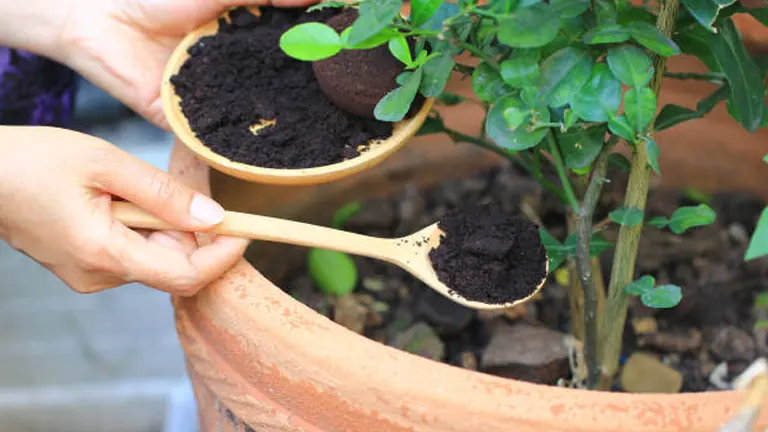
Plants require a variety of nutrients to thrive, with nitrogen (N), phosphorus (P), and potassium (K) being the primary macronutrients. These nutrients support leafy growth, root development, and flower and fruit production, respectively.
Essential Nutrients
Apart from N, P, and K, plants also need micronutrients like calcium, magnesium, and sulfur in smaller amounts. A well-balanced diet is crucial for preventing nutrient deficiencies, which can lead to various growth problems and diseases.
Using Fertilizers Responsibly
Fertilizers can replenish nutrients in the soil, but their responsible use is key to avoiding over-fertilization, which can harm plants and the environment. Organic fertilizers release nutrients slowly and improve soil health over time, offering a sustainable option for gardeners.
Temperature and Environmental Conditions: Nurturing Growth
Temperature plays a pivotal role in plant metabolism and growth. Each plant species has an optimal temperature range that supports photosynthesis and other vital physiological processes. Extreme temperatures, either too hot or too cold, can inhibit plant growth, cause stress, and even lead to death.
Adapting to Temperature Variations
Understanding the preferred temperature range of your plants is essential for creating an ideal growing environment. During hot weather, providing shade and adequate watering can help cool plants down. In contrast, during colder months, measures such as frost cloths or moving plants indoors (for potted specimens) can protect them from freezing temperatures.
Space to Grow: The Room to Thrive

Just as humans need space to stretch and grow, plants require sufficient room to expand their roots and foliage. Crowded conditions can lead to competition for light, water, and nutrients, stunting plant growth and increasing susceptibility to disease.
Ensuring Adequate Space
When planting in a garden or potting plants, consider the mature size of the plant and provide enough space for its full development. Proper spacing allows for adequate air circulation, reduces disease transmission, and ensures that each plant has access to the sunlight and nutrients it needs to flourish.
Conclusion
Understanding and providing for the basic needs of plants—light, water, soil quality, air and atmosphere, nutrients, temperature, and space—are fundamental to fostering healthy growth and vitality. By paying attention to these essential elements, gardeners and plant enthusiasts can ensure their green charges not only survive but thrive.
The journey of plant care is one of continuous learning and adaptation. Observing your plants and responding to their needs will not only lead to successful gardening but also a deeper connection with the natural world. Whether you’re tending to a lush garden or nurturing a single houseplant, the rewards of plant care are immeasurable, offering a sense of accomplishment, tranquility, and the pure joy of watching something grow under your care.
Final Thoughts and Encouragement
Remember, every plant has its unique requirements, and what works for one might not work for another. Embrace the process of getting to know your plants, experimenting with care techniques, and learning from the outcomes. The more you engage with your plants, the more intuitive and rewarding your gardening journey will become.
FAQs
- Why is light important for plants?
Light powers photosynthesis, allowing plants to convert light energy into glucose for food and oxygen for the atmosphere. The right amount of light is crucial for plant health and growth. - How often should I water my plants?
Watering frequency varies by plant species, soil type, and environmental conditions. A general rule is to water when the top inch of soil feels dry. Overwatering and underwatering can both harm plants, so it’s essential to understand the specific needs of your plants. - What type of soil is best for plants?
The best soil type depends on the plant’s natural habitat and specific needs. In general, well-draining soil rich in organic matter is beneficial for most plants. Adjusting soil types and adding amendments can help meet the nutritional and drainage needs of specific plants. - Do plants need fresh air?
Yes, plants require fresh air and good circulation for healthy growth. Air provides carbon dioxide for photosynthesis and helps prevent disease by reducing moisture on leaves. Ensuring proper ventilation, especially for indoor plants, is crucial. - How important are nutrients and fertilizers?
Nutrients are vital for plant growth, health, and reproduction. Fertilizers can replenish nutrients in the soil, but they should be used judiciously to avoid over-fertilization, which can harm plants and the environment. Organic fertilizers are a sustainable choice, releasing nutrients slowly. - Can indoor plants survive in artificial light?
Yes, many indoor plants can thrive under artificial light, especially if it mimics the spectrum of natural sunlight. LED and fluorescent lights are good choices for plants that do not receive enough natural light. - What role does temperature play in plant survival?
Temperature affects plant metabolism, growth, and dormancy cycles. Most plants have an optimal temperature range and can be stressed or damaged by temperatures outside this range. Protecting plants from extreme heat or cold is essential for their survival. - How does the space available affect plant growth?
Plants need adequate space to expand their roots and foliage. Crowded conditions can lead to competition for light, water, and nutrients, stunting growth and increasing susceptibility to diseases. Providing enough space for plants to grow is essential for their health and development.
Caring for plants is simple: they need light, water, good soil, nutrients, air, and space to grow. By meeting these basic needs, we can help our plants thrive, enriching our environment and lives in the process. Happy gardening! 😊

Benjamin Brooks
Forestry AuthorGreetings! I'm Benjamin Brooks, and my journey over the past 15 years has revolved around the fascinating realms of content creation, expertise in snow clearing, and the intricate world of lumberjacking and landscaping. What began as a simple curiosity about the natural world and heavy machinery has evolved into a passionate profession where my love for crafting words intertwines seamlessly with my lumberjacking and garden skills.

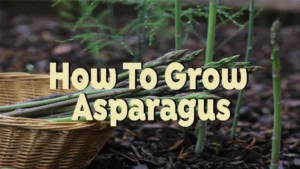

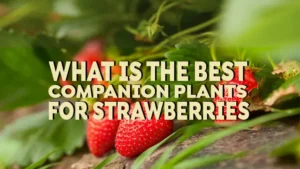








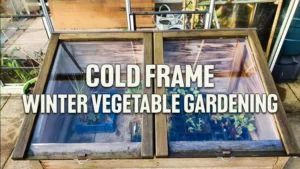
Leave your comment